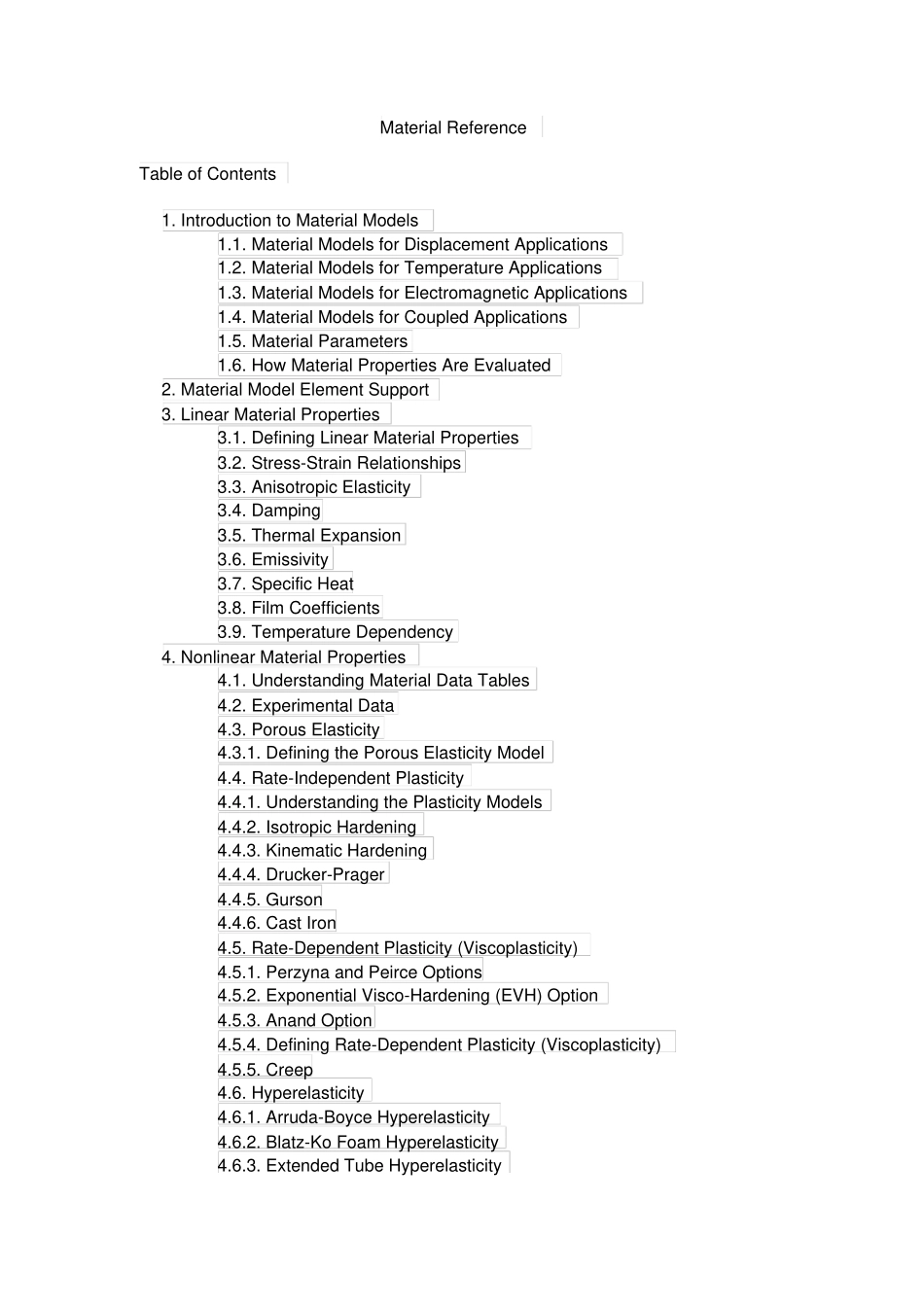Material Reference Table of Contents1. Introduction to Material Models1.1. Material Models for Displacement Applications1.2. Material Models for Temperature Applications1.3. Material Models for Electromagnetic Applications1.4. Material Models for Coupled Applications1.5. Material Parameters1.6. How Material Properties Are Evaluated2. Material Model Element Support3. Linear Material Properties3.1. Defining Linear Material Properties3.2. Stress-Strain Relationships3.3. Anisotropic Elasticity3.4. Damping3.5. Thermal Expansion3.6. Emissivity3.7. Specific Heat3.8. Film Coefficients3.9. Temperature Dependency4. Nonlinear Material Properties4.1. Understanding Material Data Tables4.2. Experimental Data4.3. Porous Elasticity4.3.1. Defining the Porous Elasticity Model4.4. Rate-Independent Plasticity4.4.1. Understanding the Plasticity Models4.4.2. Isotropic Hardening4.4.3. Kinematic Hardening4.4.4. Drucker-Prager4.4.5. Gurson4.4.6. Cast Iron4.5. Rate-Dependent Plasticity (Viscoplasticity)4.5.1. Perzyna and Peirce Options4.5.2. Exponential Visco-Hardening (EVH) Option4.5.3. Anand Option4.5.4. Defining Rate-Dependent Plasticity (Viscoplasticity)4.5.5. Creep4.6. Hyperelasticity4.6.1. Arruda-Boyce Hyperelasticity4.6.2. Blatz-Ko Foam Hyperelasticity4.6.3. Extended Tube Hyperelasticity4.6.4. Gent Hyperelasticity4.6.5. Mooney-Rivlin Hyperelasticity4.6.6. Neo-Hookean Hyperelasticity4.6.7. Ogden Hyperelasticity4.6.8. Ogden Compressible Foam Hyperelasticity4.6.9. Polynomial Form Hyperelasticity4.6.10. Response Function Hyperelasticity4.6.11. Yeoh Hyperelasticity4.6.12. Special Hyperelasticity4.7. Viscoelasticity4.7.1. Viscoelastic Formulation4.7.2. Time-Temperature Superposition4.7.3. Harmonic Viscoelasticity4.8. Microplane4.8.1. Microplane Modeling4.8.2. Microplane Material Models4.8.3. Learning More About Microplane Material M...


